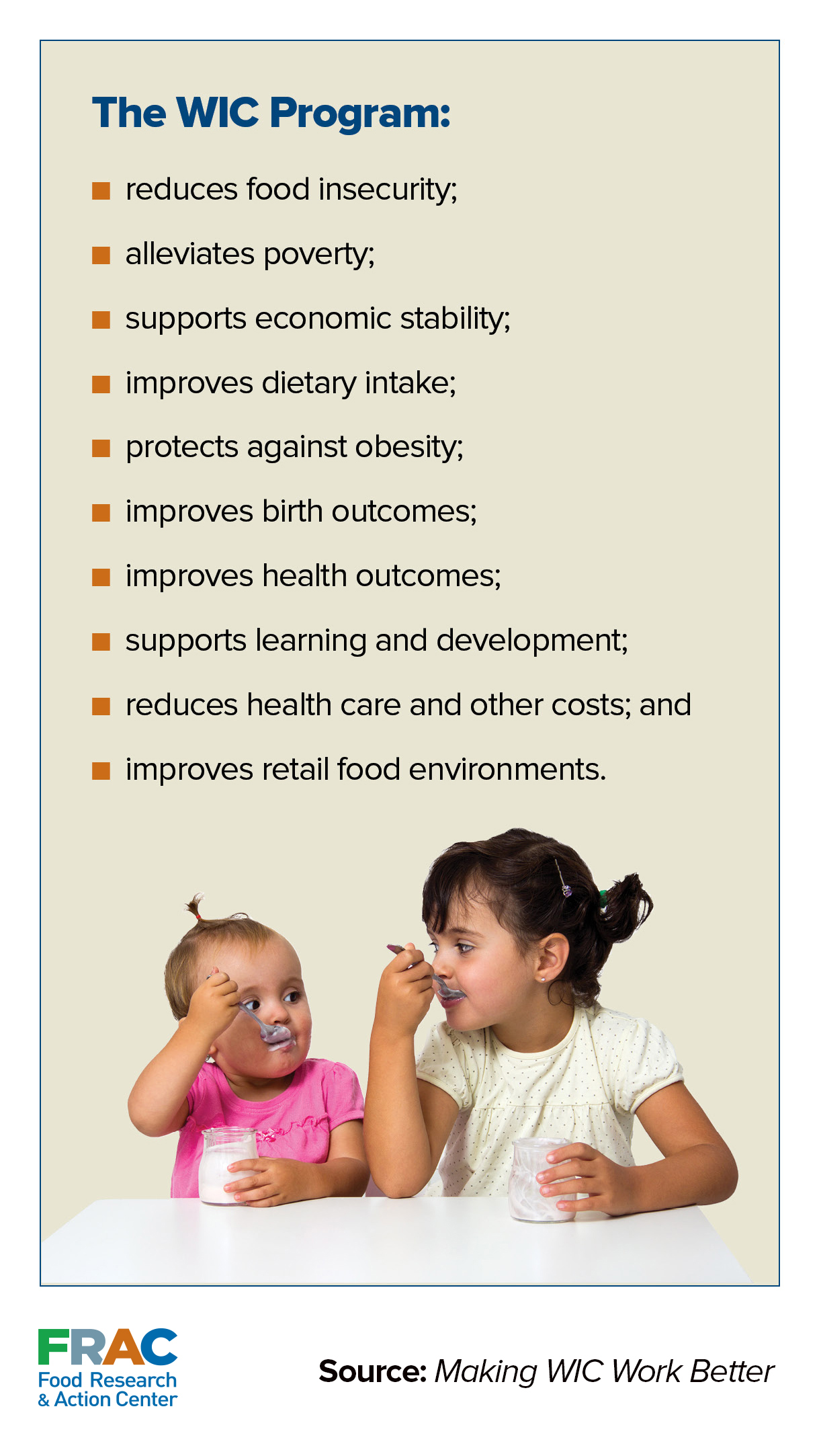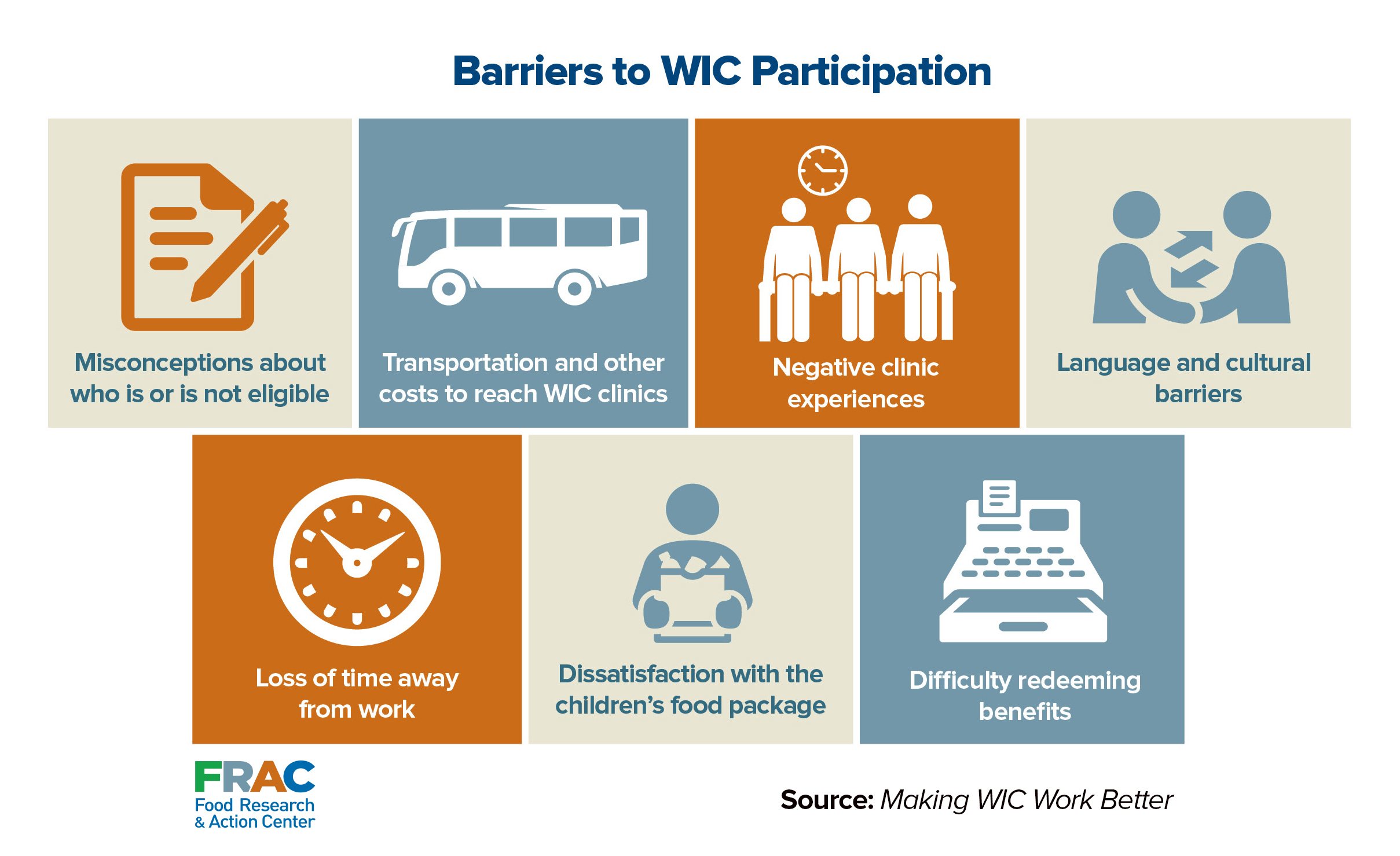
New report: Making WIC work better
 A new report released this week finds that far too many pregnant women, new mothers and their young children are missing out on the nutrition they need. The report details a “shocking downward trend” in WIC participation. The latest statistics show that WIC is only reaching three out of five eligible people. It explains the barriers that have caused participation in the program to drop precipitously during an eight-year period from 2010 to 2018. And it includes recommendations for making WIC better.
A new report released this week finds that far too many pregnant women, new mothers and their young children are missing out on the nutrition they need. The report details a “shocking downward trend” in WIC participation. The latest statistics show that WIC is only reaching three out of five eligible people. It explains the barriers that have caused participation in the program to drop precipitously during an eight-year period from 2010 to 2018. And it includes recommendations for making WIC better.
WIC (its official name is the Special Supplemental Nutrition Program for Women, Infants, and Children) is a federally funded program that provides low-income pregnant women, new mothers, infants, and young children with nutritious food, nutrition education, and improved access to health care.
And it works: experts say participation in WIC is associated with not only better diets for both mothers and children, which reduces childhood obesity, but also healthier births, lower infant mortality, increased immunization rates, and access to regular health care. Children who participate in WIC also are likely to have better academic outcomes than low-income children who do not benefit from the program.
Making WIC Work Better: Strategies to Reach More Women and Children and Strengthen Benefits, released this week by the Food Research & Action Center, provides strategies to overcome barriers to WIC participation and effectively reach and serve more eligible pregnant women, mothers, and their young children. These strategies are a result of FRAC’s multi-year investigation into the barriers to WIC participation and use of benefits. The FRAC investigation was funded by the Robert Wood Johnson Foundation.
According to the FRAC report, in fiscal year 2018, WIC served an average of 6.8 million participants each month, down 23 percent from a high of 9.2 million per month in fiscal year 2010. Barriers at national, state and local levels contributed to this decline.
Part of this decline, the report concedes, was due to improved economic conditions, which meant fewer women and children were eligible. However, the report states that the decline also reflects a drop in the share of eligible women and children who are receiving benefits. Example: 54.5 percent of those eligible received benefits in 2016, compared to 63.5 percent in 2010.
“Good nutrition is important in all stages of life, but particularly so in the earliest years, when it serves as a critical building block for a healthy future,” said Geri Henchy, FRAC’s Director of Nutrition Policy and Early Childhood Programs. “More must be done to connect more women and children to WIC. As we approach Mother’s Day, this is a timely reminder that no mother should be worried, on any day, about how she will provide nutritious food to her children to maintain their health and prevent hunger.”
Despite WIC’s much-needed benefits, the report found that many families face significant barriers to participating in the program, including:

- misconceptions about who is or is not eligible (particularly about the eligibility of low-wage working families, members of immigrant families, and children ages 1 to 5 years old);
- language and cultural barriers;
- negative clinic experiences (e.g., long wait-times);
- loss of time away from work to apply for benefits and maintain eligibility;
- dissatisfaction with the prescribed food package;
- difficulty redeeming benefits (due to a limited selection of WIC-eligible foods and embarrassing check-out experiences).
The report’s recommendations include improving the WIC clinic experience, overcoming transportation barriers, reducing the number of times families must visit the WIC clinic, adopting technology to modernize the program and optimize the shopping experience for WIC recipients, and retaining and recruiting families with eligible but unserved children 1 to 4 years old.
“WIC is a powerful program that is essential to building a culture of health for mothers and young children in communities across the country,” said Jamie Bussel, Senior Program Officer at the Robert Wood Johnson Foundation. “It’s time to redouble efforts to ensure more families can enroll in WIC and access healthy foods and beverages that will give their youngest children the best start possible by helping to improve their diet and reduce obesity rates.”
You can download the entire report here or view its executive summary here.

